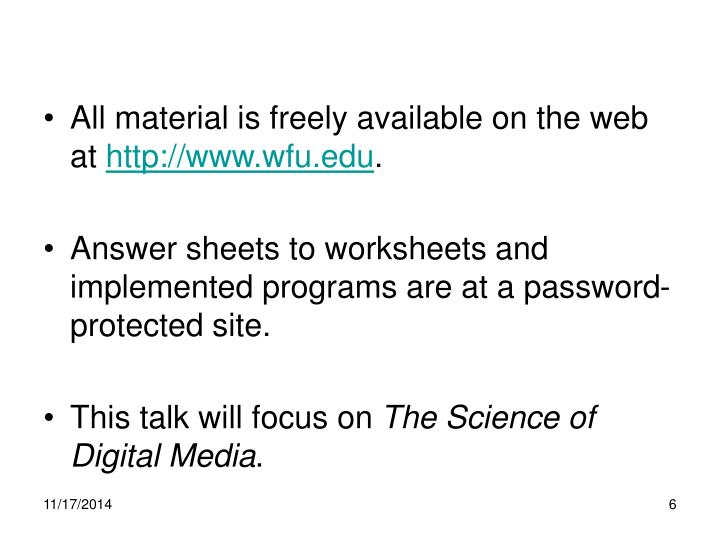
The Science Of Digital Media Jennifer Burg Pdf
Description For computer science or interdisciplinary introductory digital media courses Digital media courses arise in a variety of contexts —Computer Science, Art, Communication. This innovative series makes it easy for instructors and students to learn the concepts of digital media from whichever perspective they choose. Ruger redhawk barrel problems serial numbers.
The Science of Digital Media demystifies the essential mathematics, algorithms, and technology that are the foundation of digital media tools. It focuses clearly on essential concepts, while still encouraging hands-on use of the software and enabling students to create their own digital media projects. Instructor Resources: •.
Download Presentation Digital Media: Why Do We Need It, and How Do We Teach It as REAL Computer Science? An Image/Link below is provided (as is) to download presentation Download Policy: Content on the Website is provided to you AS IS for your information and personal use and may not be sold / licensed / shared on other websites without getting consent from its author.While downloading, if for some reason you are not able to download a presentation, the publisher may have deleted the file from their server. • A course called Digital Media covers Chapters 1 through 5 and is taught to computer science majors (juniors and seniors). • Pre-requisites are Calc I, CS1 and CS2, and data structures.

• Chapters 1 through 5 cover digital imaging and digital audio. • Digital video is introduced in the course (briefly). • In class, we cover the science and mathematics of digital media. • “Behind the scenes,” students do a game program as their semester-long term project, putting together digital photographs, vector graphics digital sound, and interactivity using Macromedia Director and its scripting language Lingo. • Students are expected to learn “hands-on” things on their own. • There is a pre-test and post-test for each chapter.
Jennifer Burg is the author of The Science of Digital Media (4.00 avg rating, 3 ratings, 0 reviews, published 2008) and Digital Sound & Music (0.0 avg ra.
• Students also do worksheets and on-line tutorials. (Note that in this course, we do not do the programming exercises.) • Second course called Digital Video and Animation, does an overview of central concepts of Chapters 1 and 5 and then focuses on Chapters 6-8, which cover digital video and multimedia programming. • Image processing (e.g., Photoshop) • Vector graphics (e.g., Illustrator or Freehand) • Digital audio processing (e.g., Audition or Sound Forge) • Video processing (e.g., Premiere or Final Cut) • Multimedia programming (e.g., Director of Flash) (I use Director). • Optional -- A programming environment (e.g., C++ or Java), if you choose to do the programming assignments. • Optional – MATLAB or Mathematica for mathematical modeling exercises. (If your students don’t have access to MATLAB or Mathematica, but YOU do, you can do the mathematical modeling exercises as in-class demos.